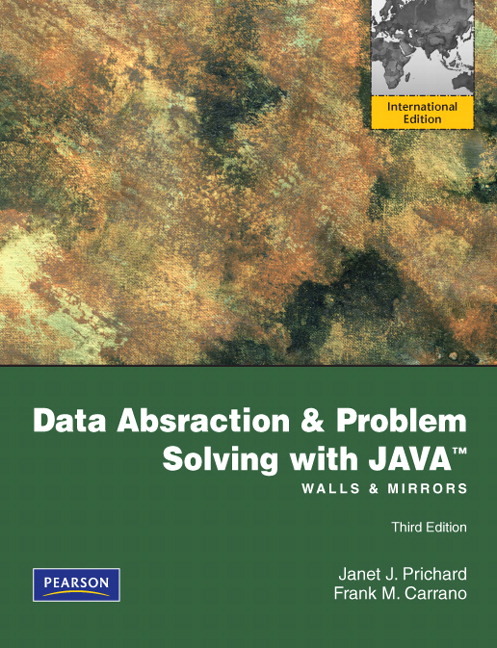Data Abstraction & Problem Solving With Java Pdf
1.2 Data Abstraction. Object-oriented programming. Tamil Elango Software. Programming in Java is largely based on building data types. This style of programming is known as object-oriented. Free PDF ebooks (user's guide, manuals, sheets) about Data abstraction and problem solving with java torrent ready for download.

Description The Third Edition of Data Abstraction and Problem Solving with Java: Walls and Mirrors employs the analogies of Walls (data abstraction) and Mirrors (recursion) to teach Java programming design solutions, in a way that beginning students find accessible. The book has a student-friendly pedagogical approach that carefully accounts for the strengths and weaknesses of the Java language.
With this book, students will gain a solid foundation in data abstraction, object-oriented programming, and other problem-solving techniques. • Uses Java 6: This edition has been thoroughly revised to be compatible with the latest release of Java, known as Java 6. All code has been completely revised to be Java 6 compliant.

Generics are also an important part of Java 6, and this material is discussed in depth in Chapter 9, and then used throughout the remainder of the collections in the text. • Enhanced Early Review of Java: We have increased the amount of coverage of the Java language in the first chapter of the book to help students make the transition from their introduction to Java course to this course. Chapter 1 provides a concise review of important Java material, including brief discussions on constructors, object equality, inheritance, and the Array class.
A discussion of the Console class from Java 6 was also added to Chapter 1. Chapter 9 focuses on advanced Java techniques, and includes an enhanced discussion of how to create an iterator class. • Linked List: The node class for linked lists has been simplified. The implementation now assumes the node class is package access only, and the other classes in the same package have direct access to the data within a node. Students are asked to explore the implications of making the data private in a node as an exercise.